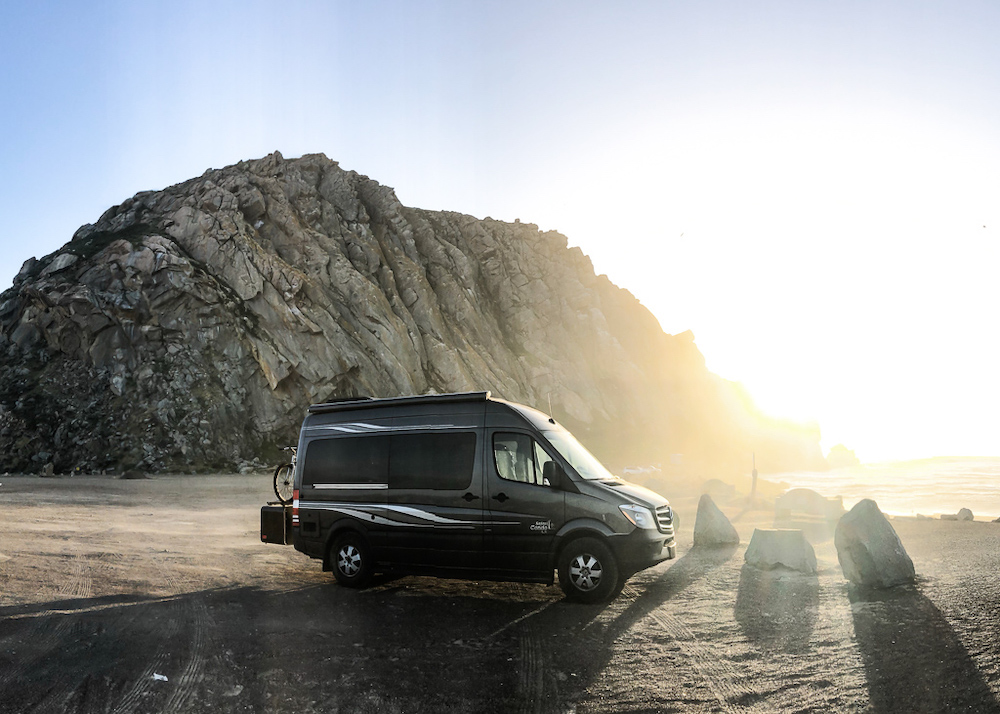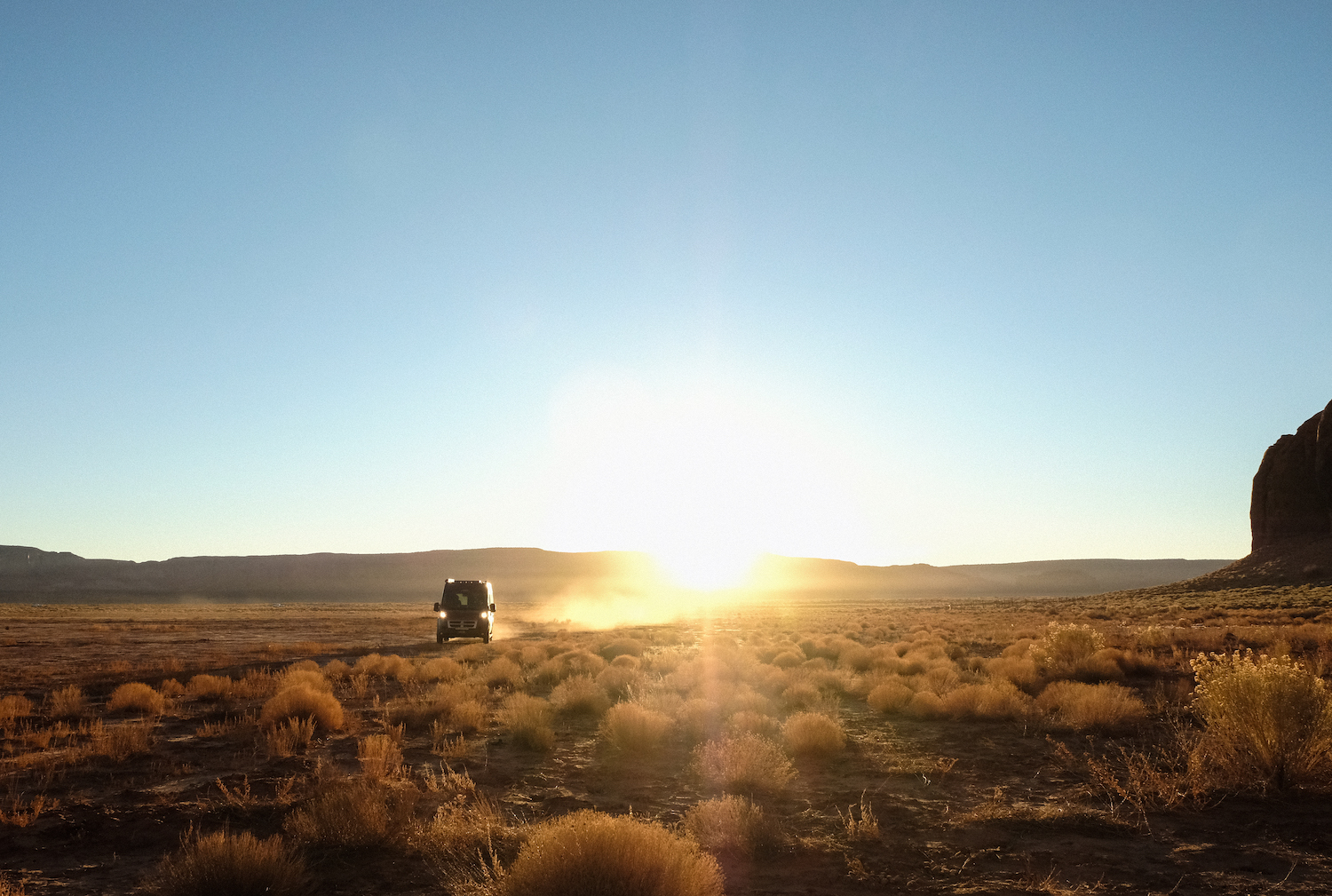Exploring the West Coast is often referred to as a vanlifer’s paradise.
When many of us think back on the beginning of vanlife and road travel in the 1970s, we picture beautiful VW vans and buses cruising down the California coast. Now, with the lifestyle becoming increasingly popular, you’ll find streets flooded with vans. You’ll see surfers seeking the best swells, adventurers chasing seasons and sunshine, and avid hikers tackling trails left and right. But what is exploring the West Coast in a van actually like? We’re here to share our tips and recommendations for exploring the West Coast, based on the first-hand experience after years of traveling the area in our vans.
Sponsored by 76®. Don’t forget to check out their First 30 Day series, all about diving into vanlife and life on the road!
There is an abundance of hikes – try to prioritize.
You may find that your dream hike list for exploring the West Coast has become overwhelming. While you really can’t go wrong in choosing which to tackle first, do your best to prioritize your wish list. Seek out the trails you are most excited about first and leave the rest for the next time around! The West Coast has so much to see and it simply cannot be tackled in one trip. There are simply too many incredible trails and landscapes along this side of the country for that short amount of time. In fact, you may never actually fully conquer your hiking wish-list. Part of the fun of researching hikes is to constantly add to this list, providing an opportunity for dreaming and excitement. Even so, one of the last things you want to happen when exploring an area is to learn about an epic hike, just immediately after leaving the area. Do some research ahead of time, ask your community for recommendations, then prioritize. There is so much to see and we would hate for you to miss it.
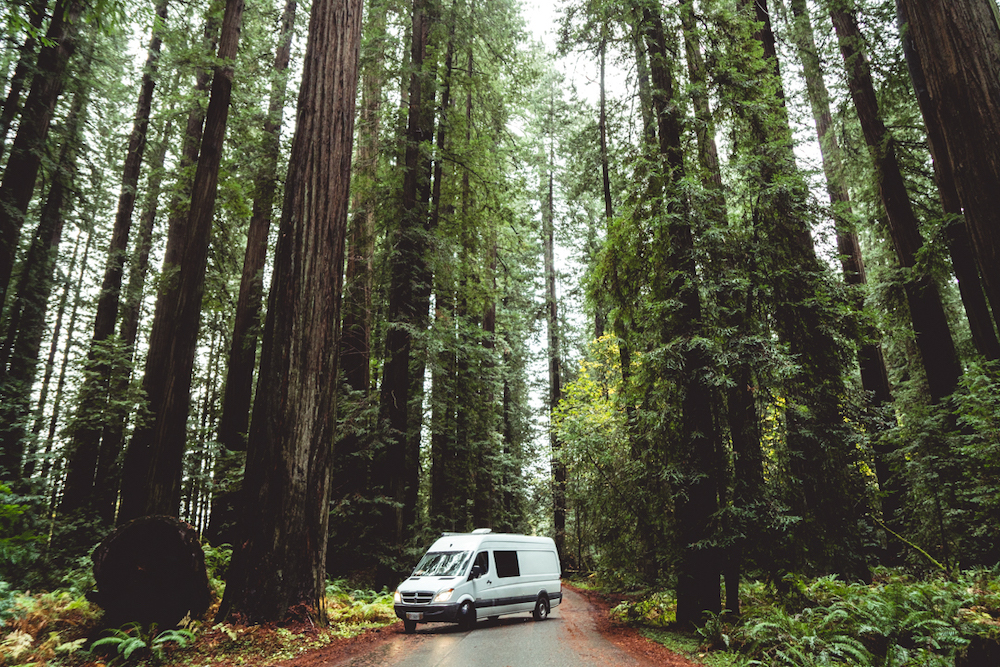
Recognize how different the weather will be in Washington versus California.
One of the best aspects of exploring the West Coast is the vast difference throughout its entirety. You can explore lush, temperate rainforests in Washington, driftwood covered beaches in Oregon, and palm tree-filled cities in California. These states are all incredibly different and you’ll want to be prepared. Not only do they differ from each other, but the seasons within each state are also immensely different. Oregon may rain inches per month in the winter but easily hit 100 degrees in the summer. Be especially careful of snow during the winter throughout the passes (particularly in southern Oregon, central California, and the tri-cities of Washington). Check out the weather forecast, plan appropriate activities, and pack accordingly.
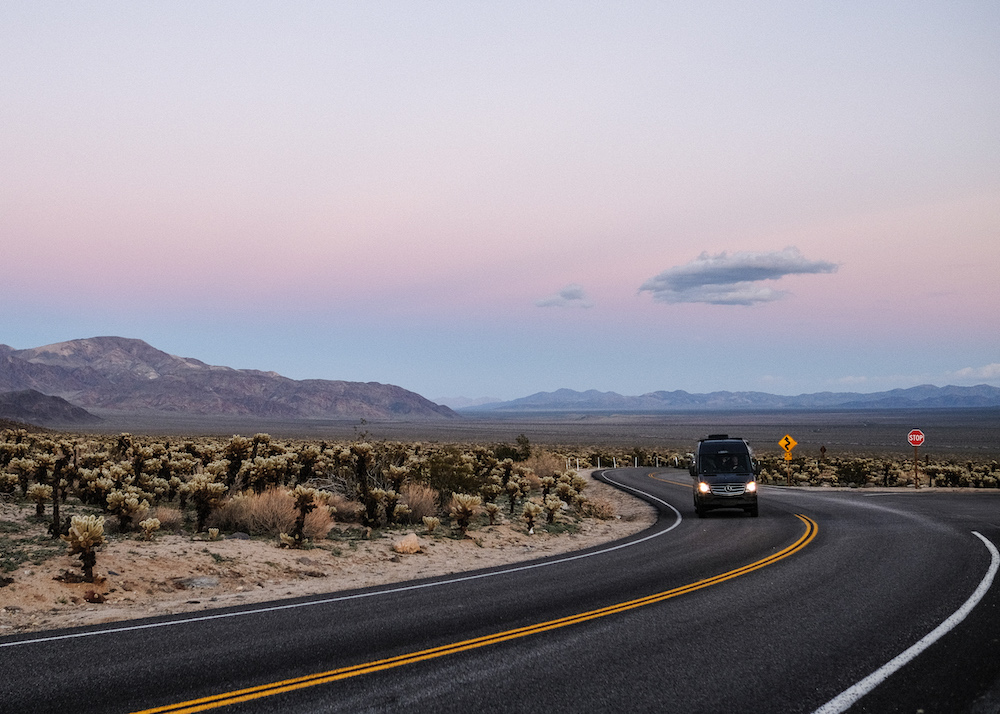
Know how to identify your public lands: BLM, National Forest, recreation lands, etc.
This recommendation is important everywhere, but especially in states that have stricter overnight parking policies. Many counties have restrictions or city ordinances against sleeping in your vehicle. Practice identifying public lands. Become familiar with reading maps. Download the apps mentioned in our “10 Things You Need to Know”. Learn about the different public lands signs so you can correctly identify when you cross onto public land. Also, know what resources are available to you. Plan ahead and locate the public lands offices in the area. This way, if you get in a pickle or need general advice, you can swing by the office and have assistance with finding free camping throughout public lands.
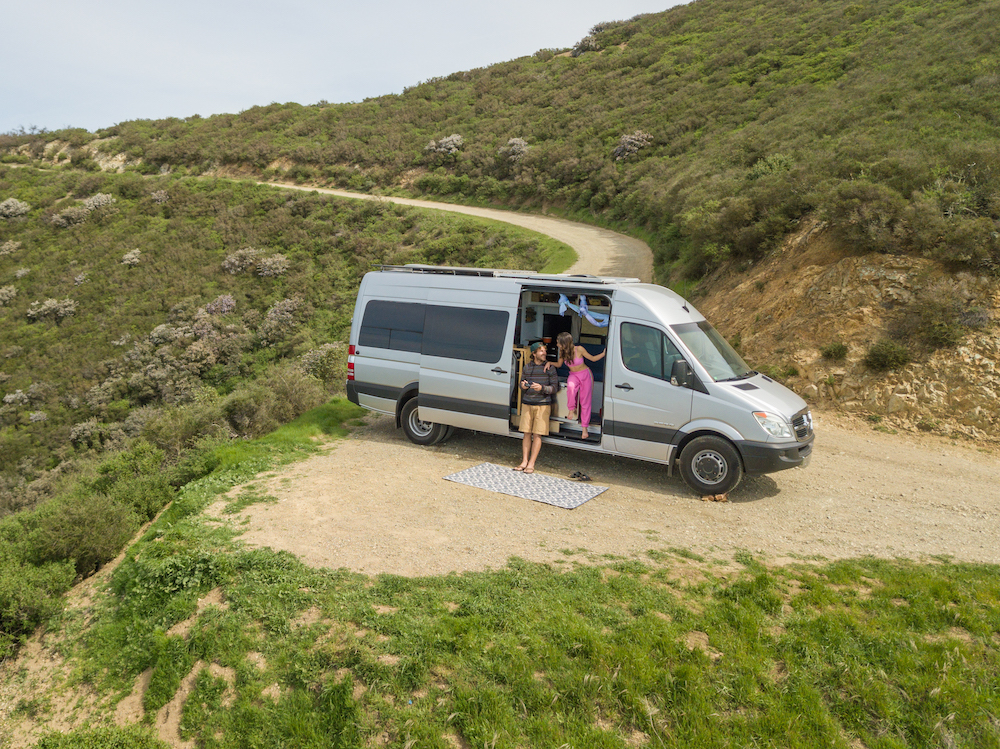
The likelihood of being knocked on in the middle of the night will increase along the coast.
If you pay for campsites more often than not, feel free to skip over this section. If you pursue cheaper camping options, then you probably already know that free coastal camping is already extremely challenging in itself. Even if you do happen to find a place to park overnight along the coast, don’t be too surprised if you receive the common 2:00 AM knock, telling you to beat it. Most of the time, police officers and security guards will simply tell you to leave. Receiving a ticket is less common than inexperienced vanlifers think. Coastal areas, especially along the West Coast, often lack public lands. Establishments that are more “RV/Van friendly”, such as Walmart, Cracker Barrel, and Cabela’s, are located close to highways in the center of these states. If you get desperate, one recommendation is to drive to the nearest rest stop. You’re allowed to park and stay there for eight hours! All in all, plan ahead and be smart with overnight coastal parking.

Buy an America the Beautiful National Parks pass!
There are so many amazing parks, especially in California that you will not want to miss. Washington has three national parks, while California has even more, totalling nine national parks in the state. Many of these parks have daily fees up to $30, which can be brutal. Often times, you’ll arrive at the park you want to explore mid-day, tackle a few hours of park exploration, and then begin again in the morning. When buying daily passes, in this scenario, you would be required to buy two day passes, totaling $60! Instead, purchase the America the Beautiful National Parks & Federal Recreational Lands Annual Pass. It only costs $80 and provides you with unlimited access to all national parks and monuments. Lastly, understand that state parks are a separate fee. You can buy an annual state park pass but you will have to buy an individual pass for each state that you plan on visiting. Day fees usually range between $5-$12 and have strict access hours, with most closing at dusk/sunset.
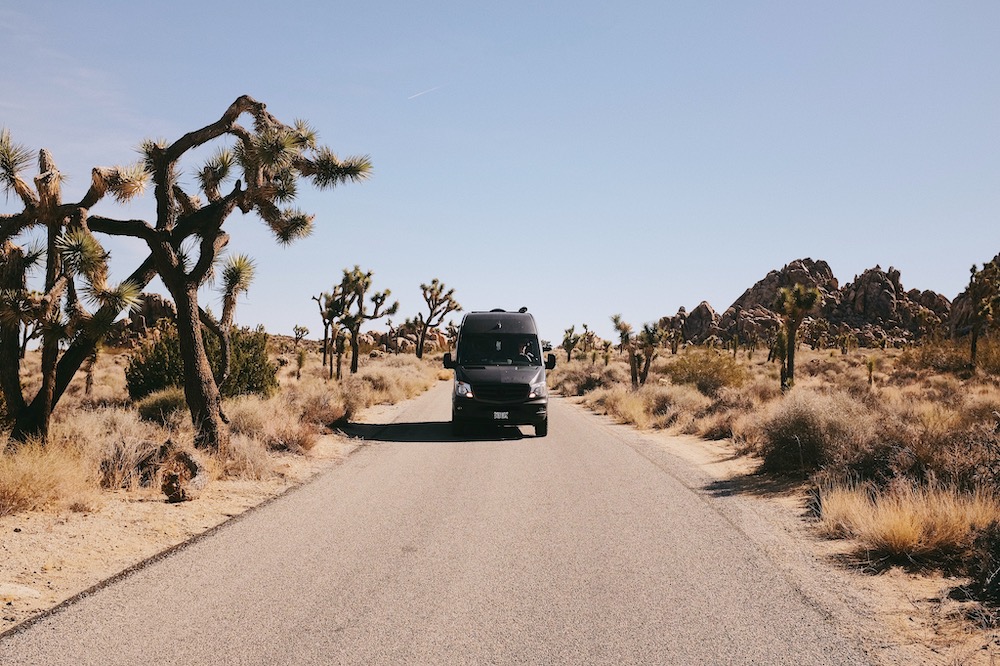
Be aware of checkpoints, especially with food.
Know what you can take over state lines (fruit, specifically citrus, is very regulated!) You may come across unexpected checkpoints along your route. If unprepared, these checkpoints can result in you having to throw away perfectly good food or even potentially having your vehicle searched. California is particularly strict with citrus fruits and has over 10 checkpoints along its border/throughout the state. A common area for vanlifers to hub around is the Mojave Desert in Southern California. It is located near Joshua Tree, Vegas, Lake Havasu, and so many other wonderful areas common for vanlifers to explore. However, there are multiple checkpoints crossing from Nevada into California and vise versa. This is where planning ahead will come in handy – there is nothing worse than grocery shopping for a week followed by having to toss out a bunch of food!
Carry change/cash.
With technology and debit/credit cards, it is common for individuals to travel without any cash. Don’t let an unexpected toll fee turn into a toll fine and damper your day! If you’re unable to pay cash on the spot, many tolls will simply hand you a slip with a hefty fine that you can pay later with a debit or credit card. There is no mercy, no “take this receipt and pay it later”, no debit or credit card acceptance. Cash. Only. Additionally, many urban areas require payment for street parking. When visiting a city, you’ll often rely on this street parking, or pay-to-park lots (especially in downtown areas). You never know when you will need to pay for parking or a toll so be prepared and carry cash.

Be prepared to park your car and walk, a lot, whether in a city, park, or coast.
You will have a more local experience and vibe of the area you are visiting. One of the beautiful things about the West Coast, as opposed to the East Coast, is how spread out it is. While every region obviously has its cities and overpopulation, the West Coast is known for abundant forests, long stretches of beaches, and open high desert. Exploring new regions in your car can be exciting on faster-paced road trips, but there is nothing like getting outside with fresh air and exploring someplace new with your own two feet. This is especially true with certain areas of nature that simply are not accessible via vehicle! Lace-up your hiking boots and take advantage of the West Coast scenery.

Take advantage of the surf!
There are some amazing beaches along the California, Oregon, and Washington coasts. In fact, Oregon offers some of the best surfing in the entire country! Each of these states offers varying beaches, with its own highlights, unique from the rest. This is not an area that you will want to miss pulling your surfboard out for. Make room for proper surfing equipment in your van, follow swells, and use your vehicle to your “ad-van-tage”. One of the best parts of traveling in a sleep-ready van is your ability to overnight park at trailheads and near the best surfing. Sleeping at the location you need to be at extremely early in the morning allows for optimal activity hours (and a later wake-up alarm time!) Pro tip: ask around for the best secret spots. This coast is particularly known for secret coves with incredible waves.

Check out some of the amazing scenic highways.
We particularly love highway 101/1 and highway 395/97 of California, Oregon, and Washington. The West Coast is known for some of the best highway road trips around. Big Sur, anyone? These highways offer scenic drives and views like no other location can. They provide a sort of magical feeling that truly takes your breath away and stops you in your tracks. Don’t just plan to rush through these either. Give yourself an extra day or night beyond what you originally think the area will take you to explore. Give yourself room to stumble across access to hidden beaches, pullouts with the most amazing views, or stop for an incredible sunset. Remember that the beauty of this lifestyle is that it allows you the ability to slow down and really be present.

Don’t be afraid to seek out less-popular destinations.
The West Coast has a million “bucket list” places to visit, photos to capture, etc. This is even truer now with the internet and social media. While these places still deserve to be visited and marveled at, we challenge you to dive deeper. After exploring some of the well-known areas, like the classic highways previously mentioned, see what you can discover by visiting a local ranger station or asking a few locals. Some of the less explored areas of the West Coast are truly the best. Take it from someone who grew up exploring the West Coast themselves! I’ve been exploring Washington, Oregon, and California for 27 years and am still finding new things to see. My West Coast bucket-list is always growing and I’m confident that yours will too.
